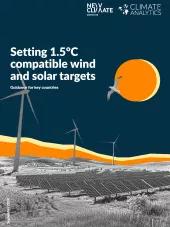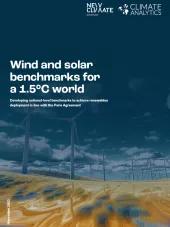A significant amount of GHGs contributing to the climate crisis are emitted from the power sector, through the combustion of fossil fuels for electricity—a continued proliferation of renewable energy is paramount to achieving the globally agreed Paris targets. In particular, solar and wind are the standout technologies to focus on accelerated deployment as falling costs and favourable policy conditions have made them competitive with conventional fuels.
Despite this, the past and planned rates of wind and solar deployment are insufficient for a Paris-compatible trajectory. Wind and solar only provided 10% of the world’s electricity in 2021; global cumulative capacity needs to be increased by a factor of 16 by 2050 while GW-scale plants are needed for producing green hydrogen for hard-to-abate sectors and power sector decarbonisation is needed as other sectors electrify, couple, and digitalise.
One missing piece to the puzzle is a lack of knowledge on the level of solar and wind production capacity needed to be installed over time at the country level so that the world keeps on a trajectory towards the 1.5°C limit of the Paris Agreement.
The objective of this project is to prepare credible and actionable benchmarks for wind and solar expansion for 20+ major economies and compare them to their targets and policies.
- Develop a transparent, standardised, and robust methodology to set national-level benchmarks for solar and wind,
- and steer a process (in parallel) to consult organisations and actor groups that are primed to use the outputs
- Calculate the benchmarks for a range of countries
- Collect data on national level policies and targets and compare them with the benchmarks
- Produce a finished series of outputs including a methodology document, final reports summarising the results, and an open-source data hub for both the benchmarks and national targets





